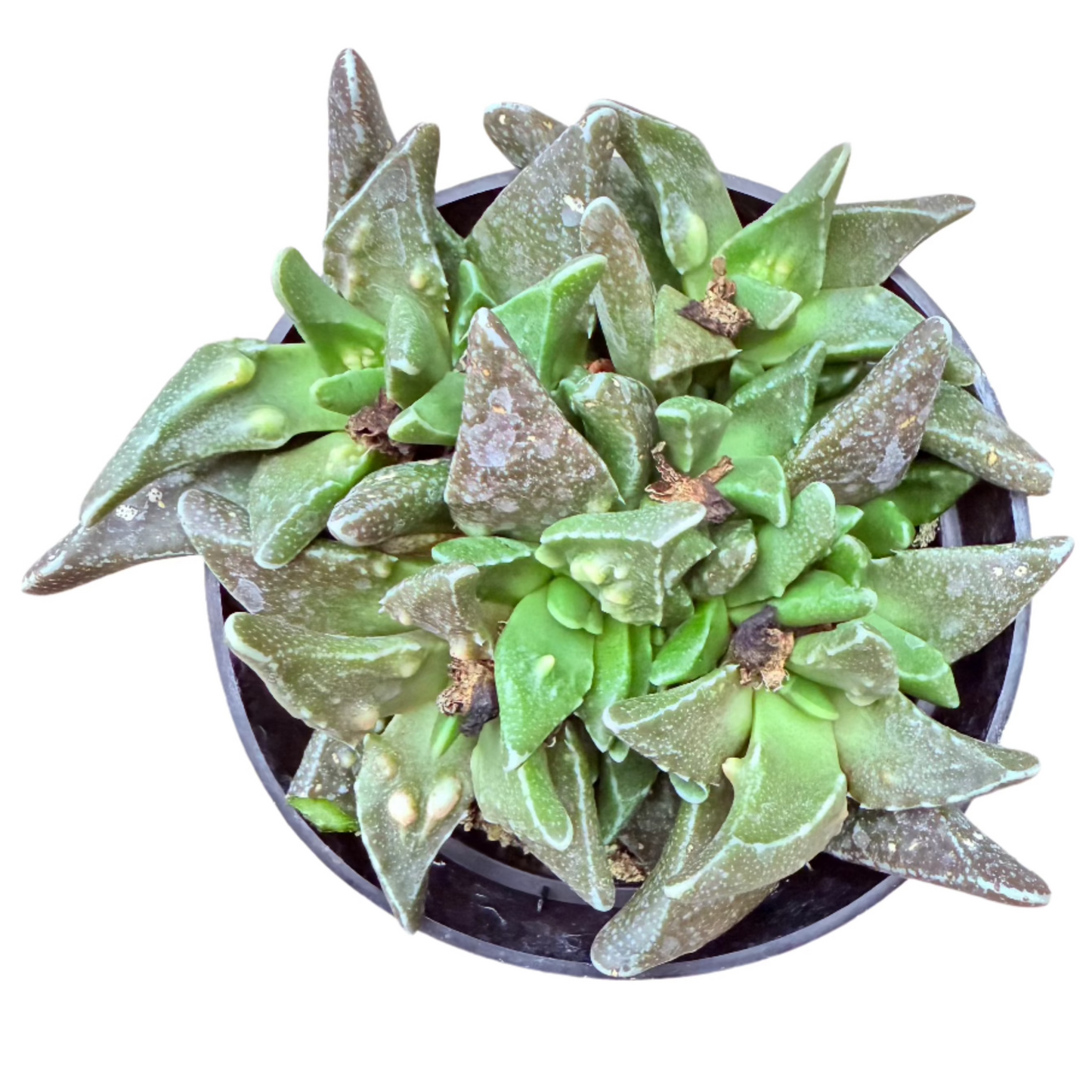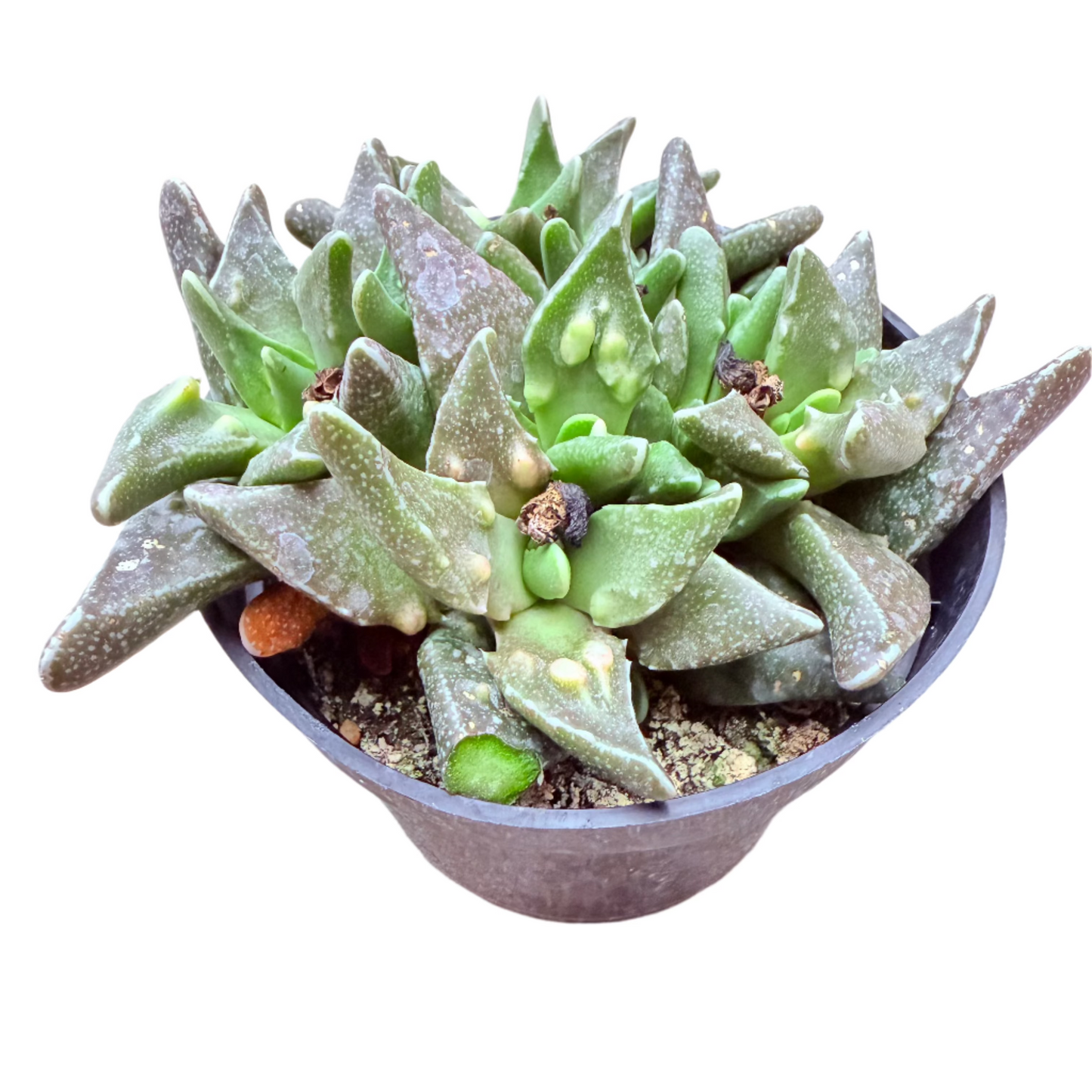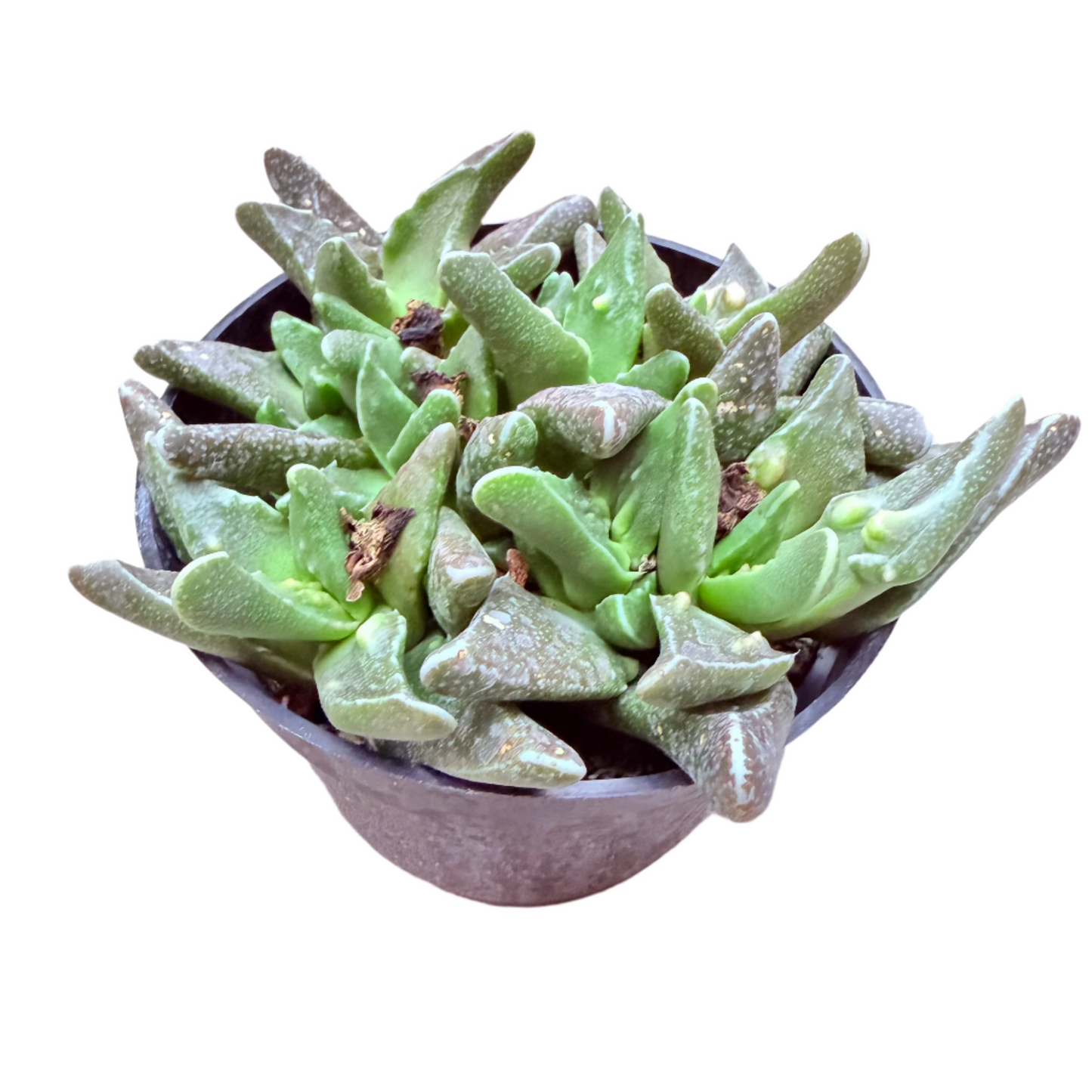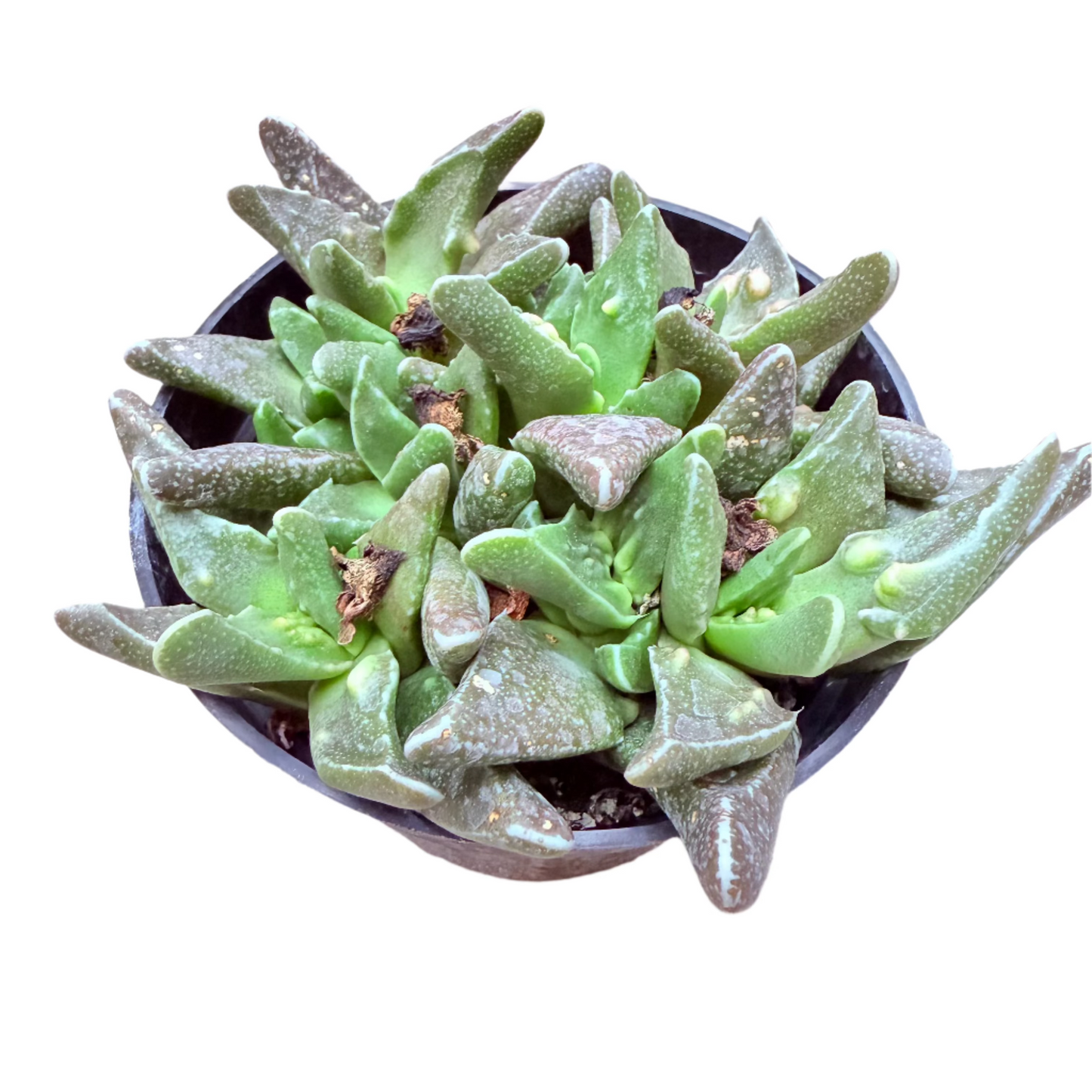Seah
Faucaria tigrina - Tiger Jaws
Faucaria tigrina - Tiger Jaws
In stock
Couldn't load pickup availability
Morphological Characteristics
Faucaria tigrina, commonly known as Tiger Jaws, is a striking succulent belonging to the Aizoaceae family. Its name derives from its dramatic, tooth-like leaf edges that resemble an open jaw lined with sharp teeth. The thick, triangular leaves are arranged in opposite pairs, forming a tight rosette. Each leaf is green to gray-green and features soft, white, tooth-like projections along the margins that give the plant its “tiger jaws” appearance.
In the fall or early winter, Tiger Jaws produce bright, daisy-like yellow flowers that open during the day and close at night. The flowers can be quite large relative to the plant’s size, adding vivid contrast to its bold, architectural foliage.
Growth Habits
Faucaria tigrina is a slow to moderate-growing succulent that remains compact, typically growing up to 10 cm (4 inches) tall and 15 cm (6 inches) wide. It forms clumps over time as it produces offsets around its base. Native to the semi-arid regions of South Africa, it is well adapted to rocky, sandy environments with intense sunlight and limited water availability.
This plant thrives in bright light, with full sun to partial shade promoting tight, toothy leaf formation and vibrant flowering.
Maintenance Points
• Lighting: Requires bright light to full sun. At least 4–6 hours of direct sunlight per day promotes healthy growth and flowering. In low light, leaves may stretch or lose their compact form.
• Watering: Water thoroughly but infrequently. Let soil dry out completely between waterings. Reduce watering during the winter months when the plant goes semi-dormant.
• Soil: Use a gritty, well-draining mix such as cactus/succulent soil with added pumice, sand, or perlite to mimic its native soil conditions.
• Temperature: Prefers temperatures between 18–26°C (65–79°F). It is not frost-tolerant and should be protected from temperatures below 5°C (41°F). Best kept indoors in cold climates during winter.
• Fertilization: Apply a diluted cactus fertilizer once a month during the active growing season (spring and summer). Do not fertilize in winter.
• Pruning: Remove dead flowers and damaged leaves to maintain a neat appearance and support healthy growth.
• Potting: Choose containers with good drainage. Shallow pots work well, and terra cotta is preferred to help wick away excess moisture.
Reproduction Method
Tiger Jaws can be propagated by offsets or seeds.
1. Offsets:
• Gently remove small rosettes (pups) that grow around the base.
• Let them dry for 1–2 days to form a callus.
• Plant in a dry succulent mix and water sparingly until roots establish.
2. Seeds:
• Collect seeds after flowering and seed pod maturation.
• Sow on the surface of a moist, well-draining soil mix.
• Keep in a warm, brightly lit area, maintaining consistent moisture (not soggy).
• Germination usually occurs in 1–3 weeks.
Additional Tips
• Pest Control: Keep an eye out for mealybugs and spider mites. Remove pests promptly using insecticidal soap or neem oil.
• Air Circulation: Good ventilation helps prevent fungal infections and rot, especially in humid areas.
• Overwintering: Move indoors or to a sheltered location during winter in colder zones. Provide bright indoor light and reduce watering.
Faucaria tigrina – Tiger Jaws is an eye-catching succulent that adds texture and character to any collection. Its fierce-looking foliage and sunny blooms make it a fun and easy-care plant for beginners and collectors alike. With minimal care and a sunny spot, it thrives and brings a bold, toothy twist to your garden or succulent dish!🌵🟡








